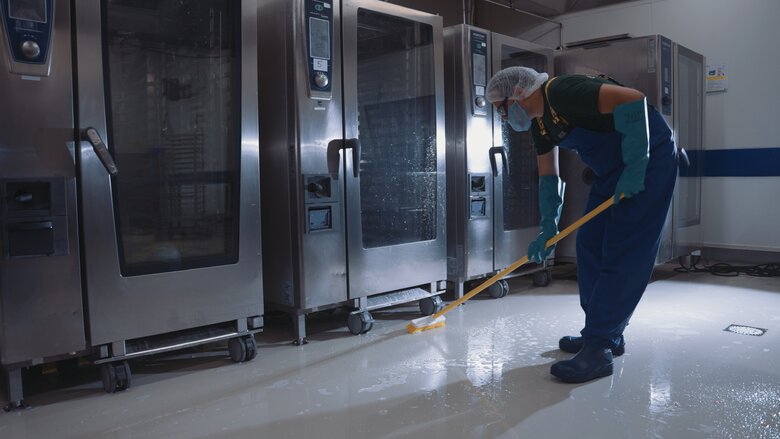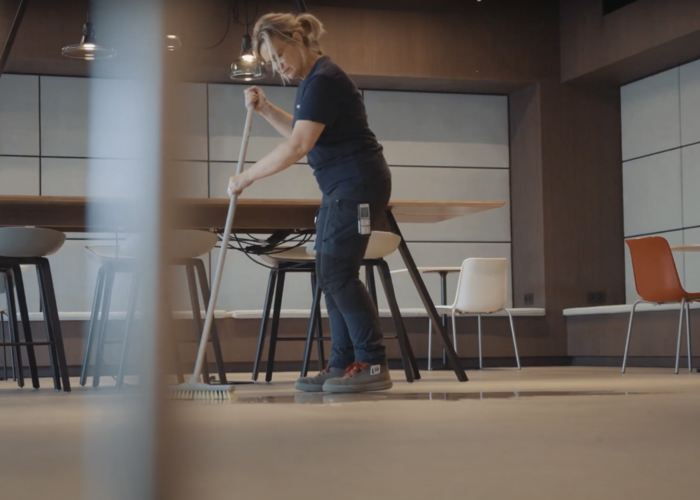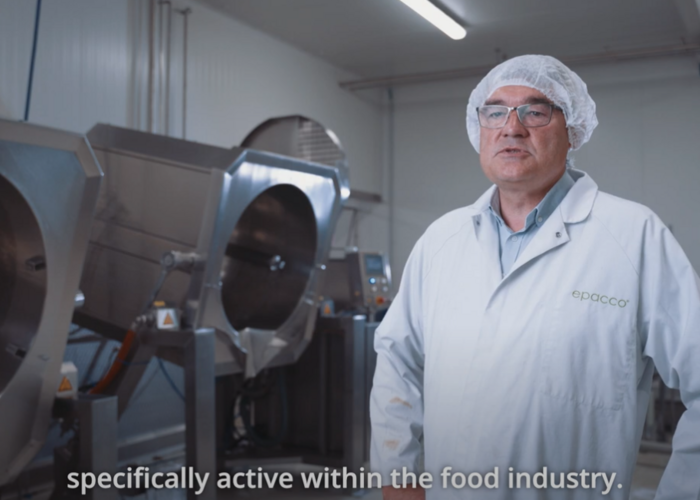Control Salmonella in your food processing facility

Salmonella, what’s that exactly?
Salmonellosis is a very common foodborne infection caused by Salmonella type bacteria.
Salmonellosis is usually caused by consumption of food from infected animals that is eaten raw or undercooked.
Salmonellosis is a benign disease and cures without treatment. However, one should drink plenty of water. Some frail and weakened individuals may experience serious complications, such as septicaemia or meningitis, though.
These infections are more common in summer, during the period of parties and barbecues, when foods are left at room temperature for a long time.
Common sources in the food industry
Salmonella is a pathogen that is prevalent in the gut of many animals such as poultry, pigs, cattle, and pets, as well as in insects and people. Salmonella can get into soil, water and food from the faeces of animals or people. The bacteria can easily be introduced into and spread throughout food production facilities via raw ingredients, dirty packaging, equipment and workers’ hands and clothing.
Once introduced into a food production environment, Salmonella thrives in moist, warm environments such as drains, floors and processing equipment.
How control Salmonella? 5 steps:
1. Prevent Salmonella entering the processing facility
• Ensure that only clean and disinfected equipment, tools and utensils are brought into the processing area.
• Test your incoming raw materials and segregate ingredients that pose a risk for Salmonella contamination.
• Implement proper pest control measures.
• Employees must be free of Salmonella infections, be trained to understand the potential sources of contamination, and use the hygienic practices and procedures needed to prevent the spread of Salmonella in the facility.
2. Undertake proper cleaning and disinfection procedures
Cleaning can be divided into wet cleaning (for meat, vegetables and dairy products) and dry cleaning (for low-moisture foods).
In the wet cleaning procedure, detergents and disinfectants can be used.
When performing dry cleaning, you will need to avoid using water, and disinfectants must evaporate quickly. If needed, a controlled wet cleaning with minimal use of water can be performed. Be sure to dry equipment after controlled wet cleaning, as any remaining moisture could increase the risk of microbial growth and cross-contamination.
3. Implement Salmonella contamination prevention procedures
• Choose the correct cleaning methods to avoid spread of contamination.
• Divide production into zones for raw and processed food handling.
• Use dedicated and colour-coded cleaning equipment and food handling tools.
Colour-coded cleaning equipment and food handling tools give you visual assurance that only equipment colour-coded for use in a given zone is used. This makes it easier to avoid Salmonella cross-contamination via equipment and tools between, for example, raw and processed zones.
• If you store your cleaning tools on colour-coded wall brackets or shadow boards, it is easier to ensure that the tools remain segregated by colour during storage. Correct storage facilitates allow for faster drying of cleaning tools and reduces the risk for Salmonella cross-contamination among tools
4. Use equipment of good hygienic design
Choose cleaning equipment and tools of appropriate hygienic design to facilitate easy cleaning and prevent microbial growth. Hygienic design features include smooth surfaces, one-piece construction, easy dismantling and a lack of crevices and coatings.
5. Monitor Salmonella in the environment
Develop a program for routinely sampling your production environments for Salmonella. An environmental monitoring program (EMP) will assess the effectiveness of your overall hygienic practices, monitor the environment for transient pathogens and help mitigate potential harbourage and growth niches.
Be sure to include cleaning equipment in your environmental monitoring program.



